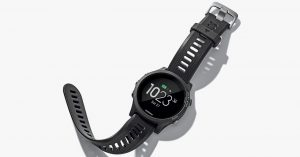If you’re one of the 147 million people in the United States affected by the egregious Equifax credit bureau hack in 2017, you were probably resigned to getting some free credit monitoring out of it and moving on. But nearly two years later, attorneys general from 50 US states and territories, the Federal Trade Commission, and the Consumer Financial Protection Bureau finally have your back. Sort of. They’ve negotiated a settlement with Equifax that entitles all victims to 10 years of free credit monitoring, or $125. Here’s how to make sure you get yours.
Of course, it’s tough to see how a payout that can maybe cover an IKEA dresser or a month of your wireless bill is adequate compensation for the loss of very valuable personal data, including Social Security numbers. But it’s all most victims can collect. (Read on for more about possible additional payouts if you’ve suffered proximal damages as a result of the breach.)
“The Equifax data breach and settlement serves as a tragic case study of net economic loss to all but the perpetrators,” Jerry Ray, chief operating officer of the data defense firm SecureAge, said in an email. “The settlement does very little for those whose data was breached, especially when the damage will hit individuals in the future where attribution to this single breach may be impossible.”
But in the spirit of “it’s better than nothing,” here’s how to collect your sweet Equifax windfall.
The two crucial websites for this are the Equifax settlement website and the FTC Equifax settlement information site.
You can use the former to check whether you’re eligible for benefits from the settlement in the first place. You’ll need to enter your last name and the last six digits of your Social Security number, which is probably not information you want to be entering on an Equifax website, but here we are. If you already know that you’re eligible, meaning your data was stolen in the breach, you can skip this step and start considering your options.
Your choice comes down to whether you want to register for long-term free credit monitoring, or a one-time $125 payout. File your claim here, or use this form to file by mail. People who were minors when the data was stolen can use this form.
But which to choose? There’s a decent chance that you already have free credit monitoring from other incidents, such as last fall’s Marriott breach. But if you don’t, it’s genuinely worth considering going that route and leaving the cash, so you’ll have the assurance that the monitoring is in place for a number of years.
Just make sure to read the fine print! The settlement specifically allows for “at least four years of free monitoring of your credit report at all three credit bureaus (Equifax, Experian, and TransUnion)” and then “up to six more years of free monitoring of your Equifax credit report.” That’s not as comprehensive as it sounds at first. At least, though, during the four years of full monitoring from all the credit bureaus you also get $1 million in identity theft insurance. This (unfortunately) could actually come in handy, given that Social Security numbers taken from Equifax are starting to show up on the dark web, and consumers have already suffered identity theft related to the breach, according to Pennsylvania attorney general Josh Shapiro.
If you already have credit monitoring or don’t want it, just file for the $125 and do a Costco run.
People who have already suffered identity theft or other damages as a result of the breach and have documentation to back it up are potentially eligible for up to $20,000 in compensation. “If you spent money to deal with fraud or identity theft that was fairly traceable to the Data Breach, or to protect yourself from future harm, then you can submit a claim for reimbursement,” Equifax says on its breach notification website.
Safe to assume that the company will try to deny these claims wherever possible, though, so make sure you submit as much information as you can, like a police report, bank letter, or IRS statement about what happened. In addition to losses and recovery costs, you can also be reimbursed for the time you spent dealing with the fallout at a rate of $25 per hour for up to 20 hours.
One other thing to note is that these benefits stem from a massive class action against Equifax, meaning that if you are considering bringing suit separately over damages caused by the 2017 breach, don’t cash in as part of this settlement.
For most people, though, this is the easiest and best way to receive some type of compensation from Equifax and make the company pay as much as possible for its unfortunate (and numerous! truly!) errors.
More Great WIRED Stories
- High drama: A cannabis biotech firm roils small growers
- Lunar mysteries that science still needs to solve
- Are super automatic espresso machines worth it?
- The best algorithms don’t recognize black faces equally
- These hackers made an app that kills to prove a point
- ??♀️ Want the best tools to get healthy? Check out our Gear team’s picks for the best fitness trackers, running gear (including shoes and socks), and best headphones.
- ? Get even more of our inside scoops with our weekly Backchannel newsletter



